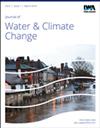Nonlinear control of climate, hydrology, and topography on streamflow response through the use of interpretable machine learning across the contiguous United States
IF 3.1
4区 环境科学与生态学
Q2 WATER RESOURCES
引用次数: 0
Abstract
Abstract Runoff has been greatly affected by climate change and human activities. Studying nonlinear controls on runoff response is of great significance for water resource management decision-making and ecological protection. However, there is limited understanding of what physical mechanisms dominate the runoff response and of their predictability over space. This study analyzed the spatial patterns of runoff response including runoff changes and its sensitivity to climate–landscape variations in 1,003 catchments of the contiguous United States (CONUS). Then, an interpretable machine learning method was used to investigate the nonlinear relationship between watershed attributes and runoff response, which enables the importance of influencing factors. Finally, the random forest model was employed to predict runoff response according to the predictors of catchment attributes. The results show that alteration of runoff is up to 56%/10 years due to climate change and human activities. Catchment attributes substantially altered runoff over CONUS (−60% to 56%/10 years). Climate, topography, and hydrology are the top three key factors which nonlinearly control runoff response patterns which cannot be captured by the linear correlation method. The random forest can predict runoff response well with the highest R2 of 0.96 over CONUS.通过使用可解释的机器学习在美国连续地区对气候、水文和地形对流量响应的非线性控制
径流受气候变化和人类活动的影响很大。研究径流响应的非线性控制对水资源管理决策和生态保护具有重要意义。然而,对支配径流响应的物理机制及其在空间上的可预测性的了解有限。本研究分析了美国1003个流域径流响应的空间格局,包括径流变化及其对气候景观变化的敏感性。然后,利用可解释机器学习方法研究流域属性与径流响应之间的非线性关系,揭示影响因素的重要性。最后,根据流域属性的预测因子,采用随机森林模型对径流响应进行预测。结果表明,由于气候变化和人类活动的影响,径流的变化幅度高达56%/10 a。流域属性在CONUS上显著改变了径流(- 60%至56%/10年)。气候、地形和水文是非线性控制径流响应模式的前三个关键因素,而线性相关方法无法捕获这些因素。随机森林能较好地预测径流响应,在CONUS上R2最高,为0.96。
本文章由计算机程序翻译,如有差异,请以英文原文为准。
求助全文
约1分钟内获得全文
求助全文
来源期刊

Journal of Water and Climate Change
WATER RESOURCES-
CiteScore
4.80
自引率
10.70%
发文量
168
审稿时长
>12 weeks
期刊介绍:
Journal of Water and Climate Change publishes refereed research and practitioner papers on all aspects of water science, technology, management and innovation in response to climate change, with emphasis on reduction of energy usage.
 求助内容:
求助内容: 应助结果提醒方式:
应助结果提醒方式:


